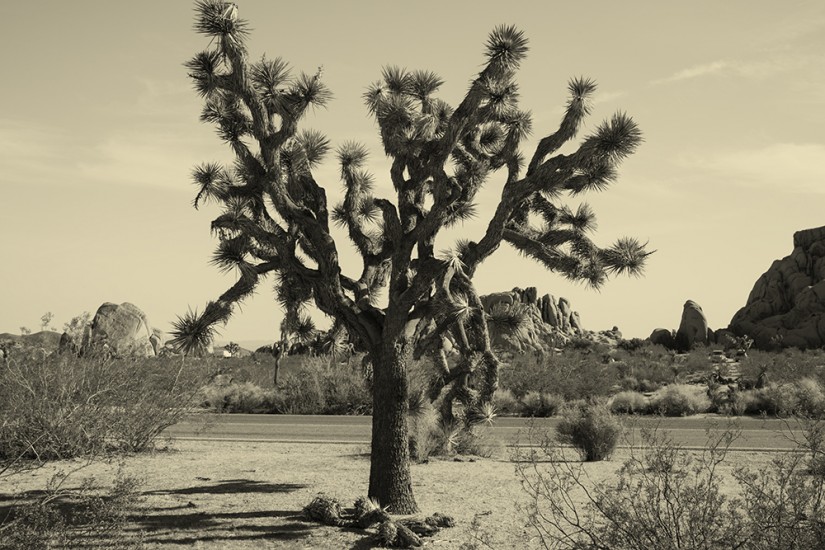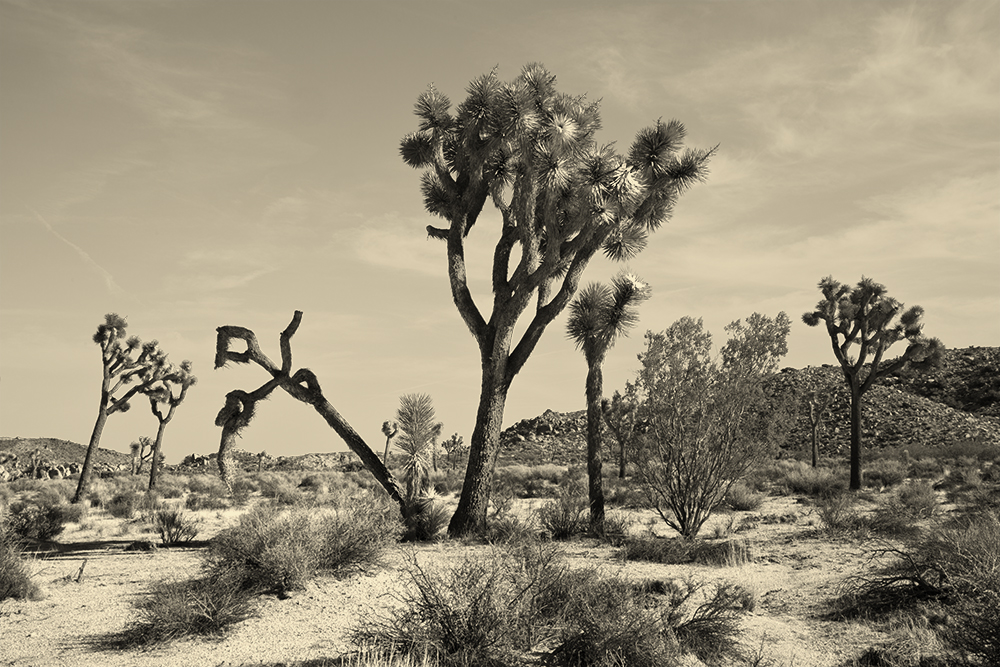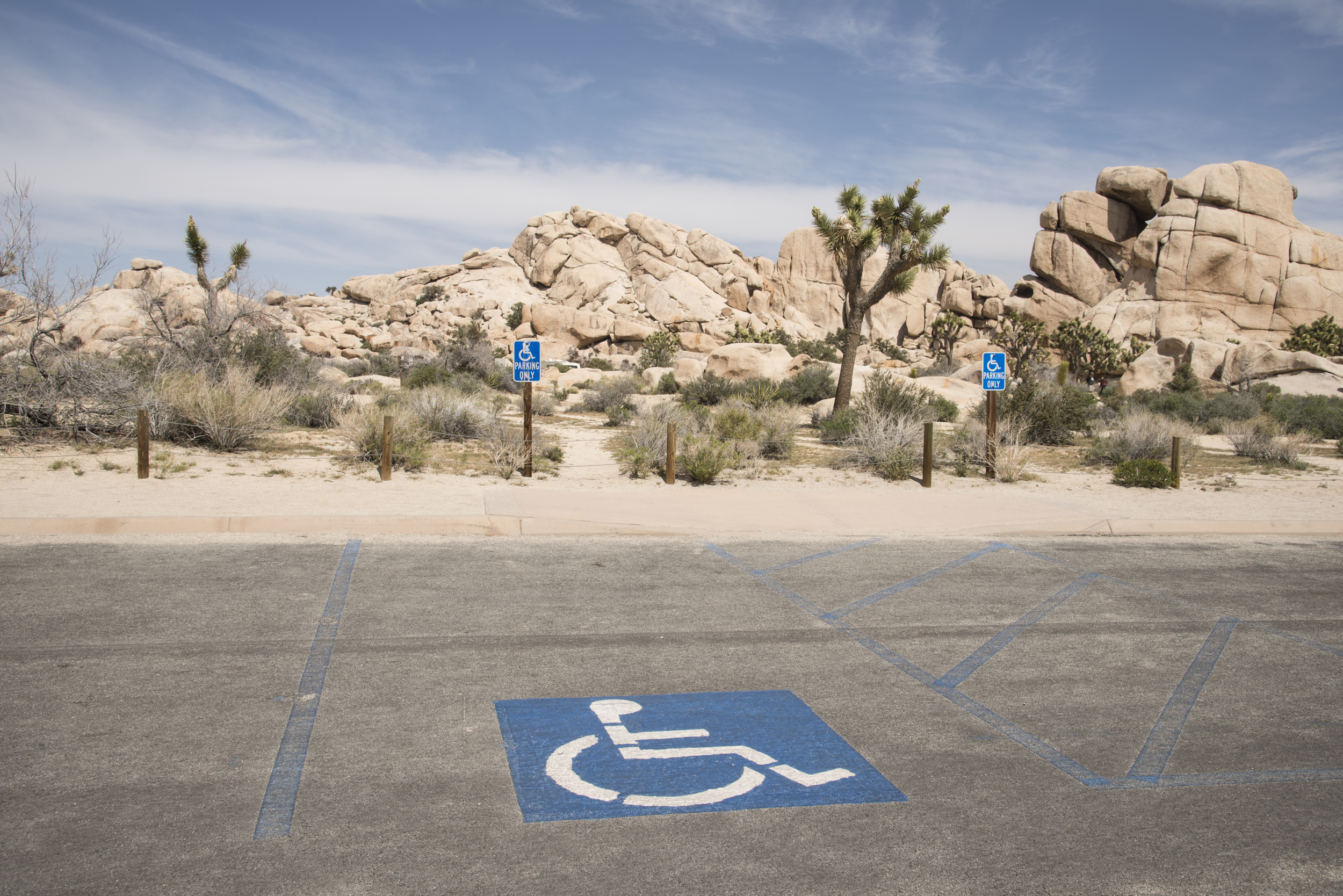Park is an art and landscape investigation of Glover’s own response to ecological stress, part of broader project entitled My Anthropocene, which is a ‘follow-on’ from the exhibition and book Changing Circumstances. The title has a double meaning. One accords with Wikipedia’s definition of a park as “an area of natural, semi-natural, or planted space set aside for human enjoyment and recreation or for the protection of wildlife or natural habitats” while in the second meaning addresses the parking of a vehicle (along with the need for roads, parking areas, lay-bys and the rest). The project also employs two very different styles of photography. One addresses what might be called the ‘romantic sublime’, to be found in many US national parks; the other speaks to the fact that people use their automobiles to move around the parks or experience them through their car windows or in designated lunch area, usually accompanied by picnic hampers. In effect, for most visitors, except the hardy walkers, the ‘park experience’ is a motorised one.
These images of Joshua trees consciously might be thought entirely within the ‘art mode.’They were first printed onto watercolour paper which are coated with liquid photographic emulsion, scanned and then enlarged before the making of the final print. The intention here has been to produce explicitly romantic images which refer back to the history of photography and early landscape photography in such parks. These are contrasted to colour images which place the park and Joshua trees in their current context, that being the age of the car and sedentary tourism.
Joshua Tree park is itself located at the meeting point of two different desert habitats, the Mojave and the Colorado. The higher-elevation Mojave has more vegetation, including the spiky-leaved Joshua Tree (Yucca Brevifolia) which is not actually tree but a yucca.
These plants grow very slowly, about an inch per year, and can live for hundreds, even thousands, of years. In an extraordinary case of co-evolution, each species of yucca plant is pollinated by a single species of moth. Adapted to a very dry climate, mature Joshua trees have shallow spreading roots and can survive on one good soaking rainfall per year.
In contrast the Yucca seedlings need more regular rain to survive. The new climate extremes and extended droughts mean that both the yuccas and their attached moths face extinction risk, adding pressures on the remaining desert ecology. Rather than exhibiting its wild, authentic nature (in fact, people lived and worked the area within the park’s boundaries for millennia), the ecology of the park plays witness to the period of the Anthropocene.
The management of the park exists between two worlds, one for those people with an interest in ecological matters or the experience of the natural sublime (in the manner of William Wordsworth’s Guide to the Lakes) and another for people whose response to the landscape is essentially touristic. Everything in the park reflects the tension between these modes, which my own work itself tries to capture. Some of the explanatory signs for the geologically and flora and fauna refer for example to John Muir whose preference was definitely for the former. Muir (1838 –1914) was the Scottish-born naturalist who petitioned the US Congress to pass a National Parks Bill in 1890. Muir’s approach to nature was highly spiritual. In his many writings he often used the term ‘home’ as a metaphor for nature. It is difficult to know what he would have thought of the national parks today, with their visitors centre and anthropomorphic signage (such as Skull Rock); creating in effect, something akin to an ecological Disneyland.
Text by Geof Rayner
See article in Discover Society, August 2016














